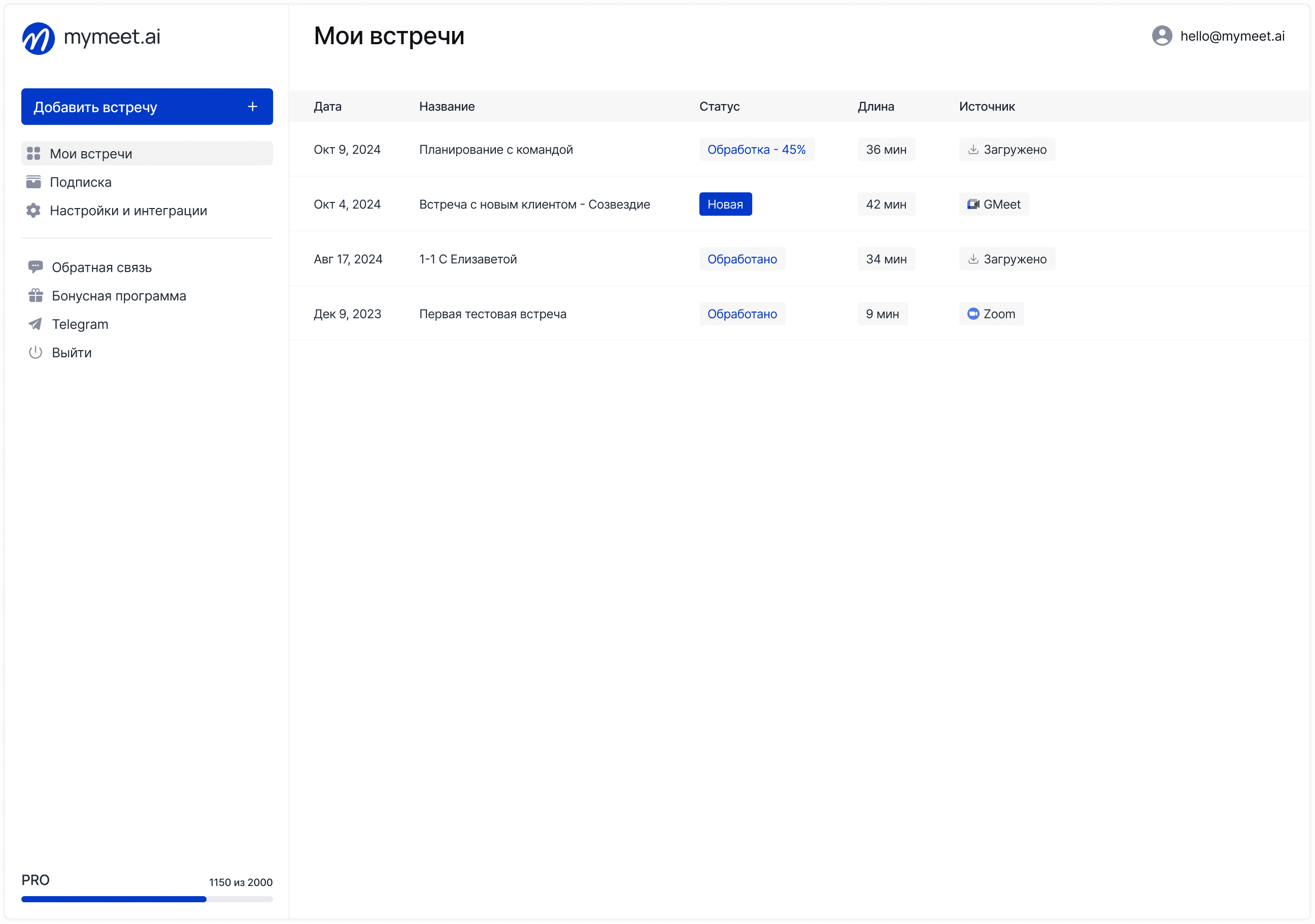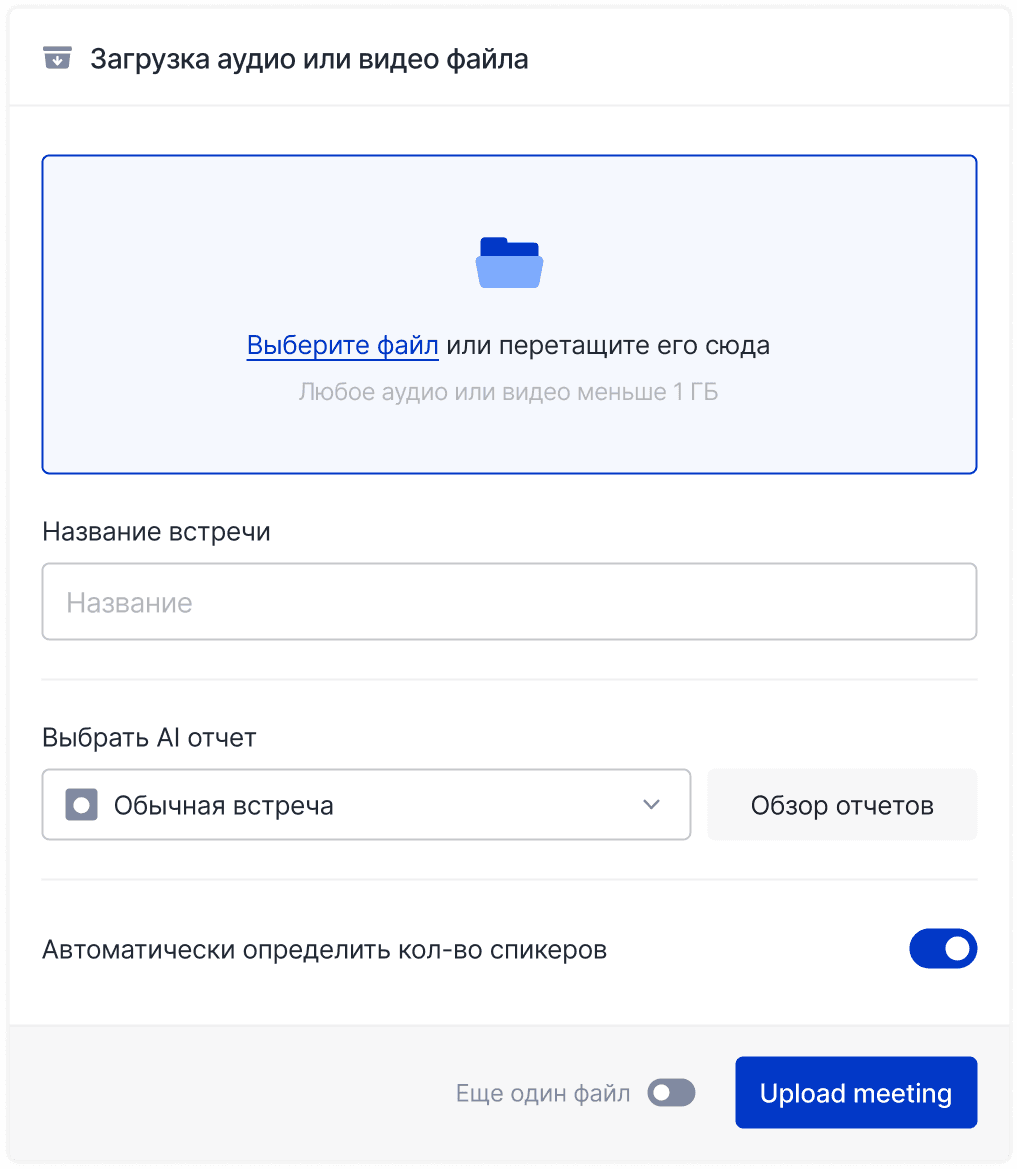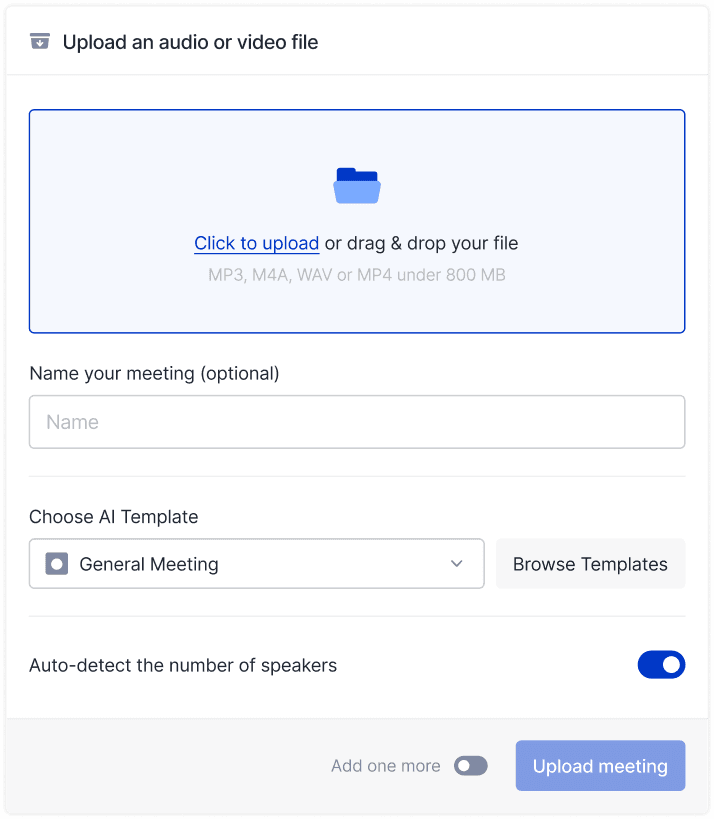Technology & AI

Radzivon Alkhovik
Sep 11, 2025
More than 500 million users daily choose between Jitsi and Zoom for business video conferencing, but 80% make decisions unconsciously — using what they know or what the IT department imposed. However, wrong choices can cost organizations hundreds of thousands of dollars annually due to overpaying for unnecessary features or time losses on unsuitable solutions.
Hello! The mymeet.ai team tested both platforms under real corporate conditions and compiled an honest Jitsi vs Zoom comparison. We'll show objective advantages and disadvantages of each solution so you can make informed decisions for your team.
Jitsi or Zoom: What to Choose
Jitsi and Zoom represent two fundamentally different approaches to video conferencing — open-source freedom versus commercial reliability.
What's the Difference Between Jitsi and Zoom
Understanding the basic philosophy of each platform helps determine which better suits your tasks.
Jitsi — open freedom of choice.

The platform was created as a completely open solution with data and infrastructure control. Every function available free, code can be checked and modified, no vendor lock-in.
Zoom — commercial reliability.

Zoom is a commercial product focusing on quality, stability, and corporate functions. Platform optimized for business processes with professional support and SLA guarantees.
Who Jitsi and Zoom Were Created For
Each platform was originally created for different user types and usage scenarios.
Jitsi is oriented toward: technical teams with administration skills, organizations with critical data privacy requirements, startups and non-profit projects with limited budgets, international teams without ties to specific ecosystems.
Zoom oriented toward: companies of any size with high video connection quality requirements, organizations conducting many external client meetings, corporations needing ready integrations and support, teams without technical skills for self-administration.
Jitsi vs Zoom: Function and Capability Comparison
Detailed comparison of main capabilities helps understand which platform better handles your tasks.
Video and Audio Quality: Jitsi vs Zoom
This is a fundamental criterion for any video conferencing platform.
Jitsi: Good video and audio quality with HD resolution support. Automatic internet speed adaptation works correctly but may lag with very weak connection. WebRTC optimization ensures low latency.
Zoom: Industry-leading video and audio quality. Proprietary compression and optimization algorithms ensure stable HD quality even with limited bandwidth. Advanced AI noise suppression.
Winner: Zoom — exceeds in stability and connection quality under difficult conditions.
Ease of Use: What's Simpler — Jitsi or Zoom
How easily new users can start working with the platform.
Jitsi: Maximum connection simplicity — just follow the link in the browser. Requires no registration or application installation. Minimalist interface without excessive functions.
Zoom: Simple and intuitive interface but requires application installation or registration for full functionality. More buttons and settings may confuse beginners.
Winner: Jitsi — significantly simpler for quick connection without preliminary preparation.
Meeting Functionality: Jitsi vs Zoom
Comparison of specific capabilities for conducting effective meetings.
Jitsi: Basic meeting functions: screen sharing, chat, reactions, virtual backgrounds. Recording only locally to the browser. Interactive whiteboard available through integrations.
Zoom: Extended function set: Breakout Rooms, polls, annotations, advanced reactions, cloud recording with automatic processing, built-in interactive whiteboard.
Winner: Zoom — significantly more built-in functions for interactive meetings.
Cost of Ownership: Jitsi vs Zoom
Real expenses for using each platform.
Jitsi: Completely free for meet.jit.si use. Self-hosted deployment requires server and administration expenses. JaaS from $0.05 per participant-minute.
Zoom: Basic free with restrictions, Pro $14.99/month, Business $19.99/month, Enterprise from $19.99/month per user.
For 20-person team per year:
Jitsi: $0 (public) or $2,000-5,000 (self-hosted with administration)
Zoom Business: $4,800 excluding taxes
Winner: Jitsi — significantly cheaper under any usage scenario.
Jitsi vs Zoom: Detailed Comparison Table
Direct comparison of key characteristics helps quickly assess which platform better suits your tasks.
Criterion | Jitsi | Zoom | Winner |
Video/Audio Quality | Good, WebRTC optimization | Excellent, proprietary algorithms | 🏆 Zoom |
Connection Simplicity | No registration, through browser | Requires app/account | 🏆 Jitsi |
Meeting Features | Basic, expanded through integrations | Full set of built-in functions | 🏆 Zoom |
Cost | Free | From $14.99 /month per user | 🏆 Jitsi |
Data Control | Complete (self-hosted) | Limited | 🏆 Jitsi |
Reliability | Depends on deployment | High, SLA guarantees | 🏆 Zoom |
Tech Support | Community forums | Professional 24/7 | 🏆 Zoom |
Integrations | API, custom | 2,000+ ready applications | 🏆 Zoom |
Security | Open-source audit | Enterprise-grade | Tie |
Scalability | Configurable | Up to 1,000+ participants | 🏆 Zoom |
Overall Score: Jitsi — 3 wins, Zoom — 6 wins, 1 tie
Zoom wins in functionality and reliability. Jitsi is better in cost and data control.
Security: Jitsi vs Zoom
Corporate security becomes critical for video conferencing platform choice.
Jitsi Security: Openness as Advantage
Jitsi's open-source nature allows complete security audits but requires proper configuration.
Security features: End-to-end encryption for P2P connections, DTLS/SRTP for server conferences, room passwords, waiting rooms, source code audit capability.
Management: Complete control with self-hosted deployment, corporate security policy configuration capability, internal authentication system integration.
Zoom Security: Corporate Protection
Zoom uses enterprise-grade security systems with professional support.
Security features: AES 256-bit encryption, end-to-end encryption on request, mandatory passwords, waiting rooms, GDPR, HIPAA, SOC 2 compliance.
Management: Centralized Admin Console management, Single Sign-On integration, detailed activity logs, organization-level policies.
Verdict: Jitsi gives more control with expertise available, Zoom offers ready enterprise solutions.
Mymeet.ai: Meeting Analysis for Jitsi and Zoom

Regardless of the choice between Jitsi and Zoom, both platforms need a solution for the same problem — how to extract maximum value from conducted meetings. Mymeet.ai solves this task for any platform.

✅ Jitsi and Zoom support — automatic connection and meeting recording on either platform
✅ Unified analytics — meeting effectiveness comparison regardless of platform used
✅ Superior Russian speech quality — best recognition of Russian names, companies, terms
✅ Automatic protocols — structured reports with decisions and tasks

✅ Work tool integration — synchronization with CRM, project systems
✅ Comparative analytics — usage metrics for different platforms for choice optimization

Case Study: Consulting Company Optimizes Platform Choice
A Moscow consulting company (30 developers) tested Jitsi and Zoom to replace outdated Skype. Jitsi attracted Zoom — with reliability for client meetings. Task — objectively compare both platforms' effectiveness.
Solution with mymeet.ai:
Parallel testing of Jitsi for internal meetings, Zoom for client meetings
Comparative analysis of Jitsi planning productivity vs Zoom presentations
Automatic protocols for all meetings regardless of platform
Decision-making quality metrics on different solutions
Result: Jitsi for daily team calls, Zoom for important client presentations. $400/month license savings + 15% meeting effectiveness growth thanks to analytics data.
Get maximum from any video conferencing platform. Contact consultant through form to set up meeting analysis for Jitsi or Zoom.

When to Choose Jitsi
Jitsi will be the best choice for certain organization types and usage scenarios.
When Jitsi Is Better Than Zoom
Technical teams with DevOps expertise. Developers, system administrators, DevOps engineers get maximum benefit from Jitsi flexibility and customization capability for specific needs.
Organizations with critical privacy requirements. Complete data control, code audit capability, no third parties make Jitsi ideal for sensitive information.
Startups and non-profit projects. Zero licensing costs allow directing limited budgets to product development instead of video conferencing payments.
International projects without ecosystem ties. Independence from American vendors and their policies ensures stability under any geopolitical conditions.
Organization Types for Choosing Jitsi
IT companies with own infrastructure
Government organizations with data localization requirements
Educational institutions with limited budget
Non-profit organizations and open-source projects
When to Choose Zoom
Zoom is optimal for organizations with certain priorities and needs.
When Zoom Is Better Than Jitsi
Companies with frequent external meetings. Zoom exceeds reliability during client, partner, contractor meetings. Professional image and stability critical for business reputation.
Organizations without technical expertise. Ready cloud solutions with professional support eliminates the need for IT specialists to administer video conferencing.
Teams needing advanced functions. Breakout rooms, polls, interactive whiteboards, cloud recording — Zoom's built-in capabilities save time searching and integrating third-party solutions.
Corporations with compliance requirements. Ready GDPR, HIPAA, SOC 2 compliance certificates simplify audits and industry standard adherence.
Organization Types for Choosing Zoom
Consulting agencies with frequent client presentations
Financial organizations with compliance requirements
Manufacturing companies without own IT department
International corporations with high quality standards
Migration Between Jitsi and Zoom
Transitioning from one platform to another requires planning to minimize workflow disruption.
How to Switch from Zoom to Jitsi
Main challenges: Loss of ready integrations, need for technical skills for self-hosted deployment, team adaptation to different interfaces.
Action plan:
Assess team technical capabilities for administration
Choose between meet.jit.si, JaaS, or self-hosted deployment
Configure integrations with existing work tools
Train team on open-source platform capabilities
How to Switch from Jitsi to Zoom
Main challenges: Need for license budget, adaptation to commercial ecosystem, corporate security policy configuration.
Action plan:
Choose appropriate Zoom pricing plan
Configure Single Sign-On and corporate system integrations
Train administrators on Admin Console management
Migrate meeting recordings and security settings
Conclusion: Jitsi vs Zoom — Make Conscious Choice
Jitsi and Zoom are two excellent solutions for different priorities and usage scenarios. Jitsi excels as an open-source platform with complete control and zero cost. Zoom is better as a ready commercial solution with maximum reliability and functionality.
Don't choose a platform only by cost or popularity. Evaluate your real needs: do you have technical expertise for administration, is data privacy critical, how often do you conduct external meetings. The right choice will increase team productivity and ensure long-term effectiveness.
Ready to make an informed choice between Jitsi and Zoom? Test both platforms in real work scenarios and choose a solution that better matches your business processes.
FAQ: Jitsi vs Zoom
What's better for business — Jitsi or Zoom?
Jitsi is better for technical teams with limited budget, data privacy requirements, readiness for self-administration. Zoom better for organizations with frequent external meetings, need for ready corporate functions, lack of technical expertise.
Jitsi vs Zoom — cost comparison?
Jitsi is completely free for meet.jit.si use, self-hosted requires server expenses ($100-500/month). Zoom Pro $14.99/month, Business $19.99/month per user. Jitsi is significantly cheaper for any team.
Video quality — Jitsi or Zoom better?
Zoom exceeds in video connection quality and stability thanks to proprietary optimization algorithms. Jitsi provides good quality through WebRTC but may lag with very weak internet or large participant numbers.
Jitsi vs Zoom for international teams?
Jitsi is better for international teams — no geopolitical risks, complete independence from American companies, deployment capability in any jurisdiction. Zoom may face sanction restrictions.
Security — where's more control Jitsi or Zoom?
Jitsi gives complete control with self-hosted deployment — can audit code, configure security policies, store data locally. Zoom offers enterprise-grade security but with limited user control.
Ease of use — Jitsi or Zoom simpler?
Jitsi is simpler for quick connection — no registration required, works in browser, minimalist interface. Zoom simpler for advanced use — more built-in functions, ready integrations, professional support.
Jitsi vs Zoom for education — what to choose?
Jitsi is ideal for educational institutions — completely free, no time restrictions, simple student connection. Zoom better for professional online courses needing Breakout Rooms, polls, recording.
Integrations — where more capabilities Jitsi or Zoom?
Zoom offers 2,000+ ready integrations through the app marketplace. Jitsi requires self-configuration through API but gives more flexibility for custom solutions. Zoom for ready solutions, Jitsi for customization.
Reliability Jitsi vs Zoom — what's more stable?
Zoom provides enterprise-grade reliability with SLA guarantees and professional support. Jitsi depends on deployment quality — meet.jit.si may be unstable, self-hosted requires administration expertise.
Can Jitsi and Zoom be used simultaneously?
Yes, many organizations use a hybrid approach: Jitsi for internal meetings and budget savings, Zoom for important external presentations and client meetings. Main thing — clearly separate usage scenarios.
Radzivon Alkhovik
Sep 11, 2025








